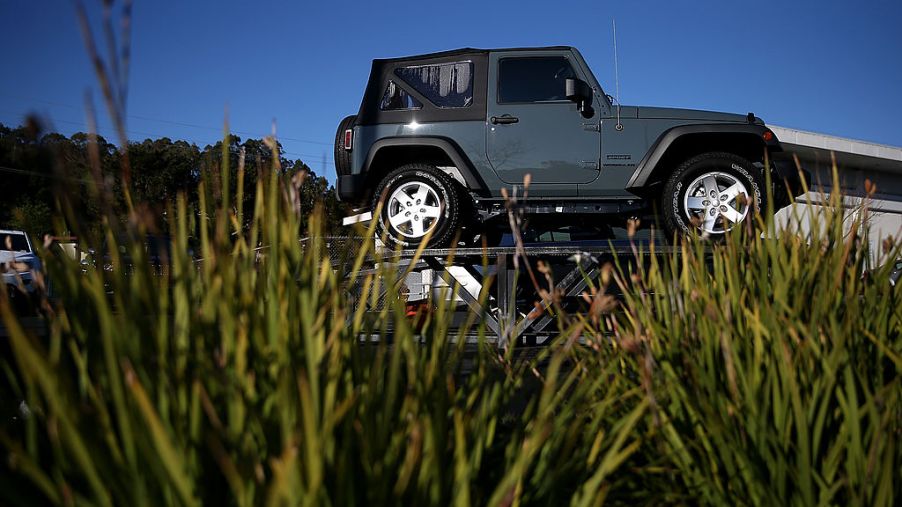
The Raider Was Dodge’s Answer to the Success of the Jeep Wrangler
Looking back at SUVs over the years, there have been some groundbreaking models that have sustained decades and continue to reinvent and adapt to tech and consumer demand still today. Other vehicles came and went with little to no impact on the industry, or in consumer memory. How many people remember the Dodge Raider, as an example?
This boxy ride was the automaker’s response to the Jeep Wrangler back in the late ’80s. It came out strong but quickly faded into obscurity.
The Dodge Raider entered the stage in 1987
Dodge introduced the Raider in 1987, and the rugged SUV lasted through 1988 and 1989 before quickly disappearing from the North American market. At the time, consumers were buying up the Jeep Wrangler YJ, the Suzuki Samurai, and the Geo Tracker with increased popularity.
Dodge was eager to compete when it launched the Raider with its four-cylinder and 3.0L V6 motors. Each Raider came equipped with a part-time four-wheel drive and plenty of off-road potential.
It may have been just posing
There may have been some initial hype about the Dodge Raider, but in truth, it may have been posing as an innovative SUV. In fact, according to The Speed Trap, it was a rebadged Mitsubishi Pajero, a popular South American model known in North America at the time as the Montero.
Dodge imported the SUV, and few changes were made. The original Mitsubishi Montero offered two or four-door options, but the Dodge Raider was only made available in a two-door configuration with a rear hatch.
Why the Dodge Raider didn’t make the cut
There was intense consumer demand for a hearty, smaller SUV back then as people wanted a fun and capable ride. Dodge quickly took notice and tried to compete with the likes of the Jeep Wrangler when it introduced the Dodge Raider.
It tried to offer more grit with its V6 option, and this SUV did manage to gain a cult following here in the states with an off-road audience. It was common for Raider owners to pump up their SUVs with lift kits, racks, mud-terrain tires, and custom suspensions. But adding on the equipment to level the Raider with the capability a Jeep was already offering, didn’t seem to sit well with most.
The competition was already steep with rugged contenders
The late ’80s and early ’90s were ripe with boxy SUV options. The Jeep, of course, dominated with the Wrangler. But other automakers joined the race as well. Mazda launched its Navajo. Kia introduced the Borrego. The Dodge Raider found itself competing with the Geo Tracker and Acura SLX, too.
GMC came out with its Typhoon, an equally impressive, and now collectible, powerhouse rendition a traditional SUV. With competition this steep, and being a little late to the dance, the Dodge Raider didn’t live long beyond its three-year run.
The diamond in the rough
It may not have been a top seller back in the ’80s, but some consumers did really enjoy their Raiders. They were rugged and easy to maintain. Finding one today means hitting the scrap yards and scrubbing through the classifieds.
They are rare unicorns, and a few of those fans from years ago, have preserved their iconic off-roaders. Like many of the vehicles with shorter production lifespans, the Dodge Raider has become a diamond in the rough to collectors.
Sometimes, it’s worth looking back over history to reflect on the vehicles that changed lives decades ago. Unfortunately, the Dodge Raider didn’t get a chance to make a huge difference. But it did manage to garner a few fans and has since become an iconic relic among vehicle treasure hunters.


